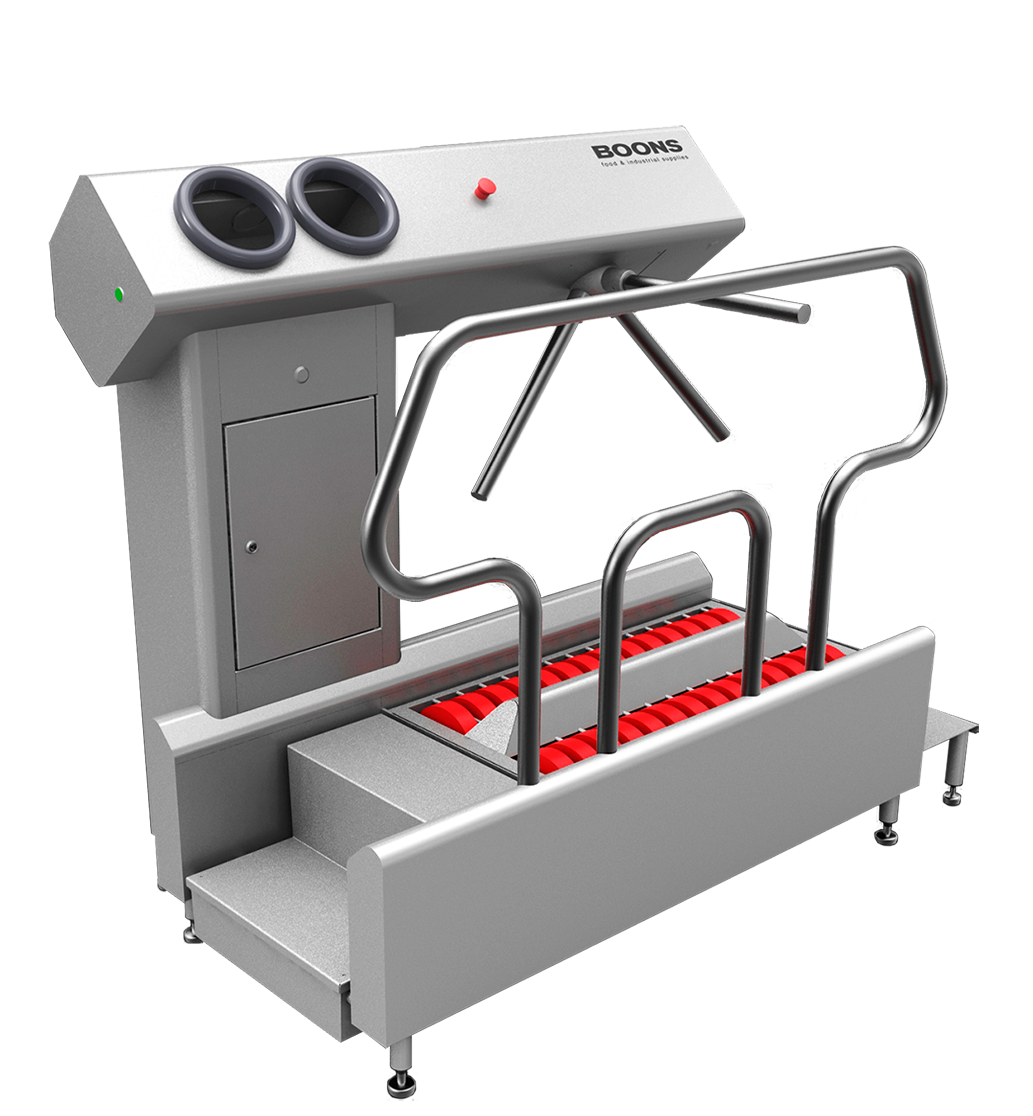Hygiene zone classification: essential for food safety and efficiency
- Monday 28 April 2025
- By: BOONS FIS
- Category: Hygiene equipment
Hygiene is one of the most important pillars in the food industry. Ensuring food safety is essential to ensure product quality and to minimise risks such as cross-contamination or food poisoning. An effective way to achieve this is to divide production environments into different hygiene zones. But what exactly does this zone classification entail, and why is it so important? And how do you determine which zones are needed? This blog offers quality managers a practical overview.
The usefulness of hygiene zone classification
Zone classification means dividing a facility into specific areas based on the risk of contamination and required hygiene standards. Each area has its own rules and protocols. This helps control contamination and minimises the spread of microorganisms and allergens.



Dividing a production environment into hygiene zones ensures:
- Risk management
Identifying risk areas and keeping them physically separated reduces the risk of cross-contamination.
- More efficient processes
Each area has its specific cleaning and disinfection protocols, ensuring targeted and efficient hygiene practices.
- Compliance with regulations
Many food safety standards (such as HACCP, BRC and IFS) require clear zone separation of areas to ensure food safety.
- Traceability
In case of a possible contamination, the source can be traced faster when the zones are well defined.
The different hygiene zones
In the food industry, three main types of hygiene zones are generally distinguished. However, this may vary depending on specific needs within the production process.



01. Red (High Risk) Zone
- Areas where open food is processed or prepared immediately.
- Examples: Cutting areas, packaging lines for fresh products.
- Requirements: Strict hygiene protocols, such as a hygiene lock, clothing changes, disinfection points, and air quality control.
02. Orange (Medium-risk) Zone
- Areas where already packaged food is stored or processed.
- Examples: Packaging areas and storage areas for finished goods.
- Requirements: Regular cleaning and controlled access.
Green (Low Risk) Zone
- Areas without direct contact with food or where dry storage takes place.
- Examples: Warehouses for dry goods and office spaces.
- Requirements: Standard cleaning protocols.
How to create a zone layout?
Setting up an effective zone division requires a systematic approach. Here are the key steps:
1. Conduct risk analysis:
- Identify which processes and areas pose a high risk of contamination.
- Use an HACCP analysis to identify critical points.
2. Define zones:
- Classify the production environment according to risk level (high risk, medium risk, low risk).
- Take into account the flow of raw materials, products and personnel.
3. Establish protocols:
- Establish specific hygiene requirements for each zone. Consider dress code, cleaning frequency and disinfection procedures.
4. Adapt infrastructure:
- Provide physical separations, such as walls, airlocks, or changing rooms to prevent contamination.
- Install hygiene stations or hygiene locks at strategic locations.
- Provide separate access points for employees, raw materials and finished products.
5. Train staff:
- Provide training so that operators understand the different areas and adhere to the rules.
6. Regular inspections and optimisation:
- Conduct periodic inspections and audits to check that the zones are used and maintained correctly
- Adjust the plan if processes or production lines change.

Success factors for zone management
- Clear communication
Use visual aids such as colour coding, signs and markings to distinguish zones.
- Strict access control
Restrict access to high-risk areas through badge control or strict procedures.
- Continuous improvement
Regularly analyse and optimise the zone layout based on experiences and audit results.

Classifying production environments into hygiene zones is not an unnecessary luxury, but a necessary measure to guarantee food safety.
By identifying risk areas, drawing up clear protocols and making employees aware of their importance, companies in the food sector can not only comply with regulations, but also strengthen the confidence of their customers.
Do you want to know more about how to effectively implement zoning? Get in touch with us; we like to think along with you!
Products in this message

URK hygiene station
The URK is a robust hygiene station that was designed for the controlled passage of employees...
Station
DSW‑FD‑1‑R
The mechanically controlled DSW FD-1-R is a simple to operate decentralised cleaning station...

Station
CS‑FD‑1‑R
This CS centralised satellite is standard equipped with a stop and 3 positions: foaming (F),...

